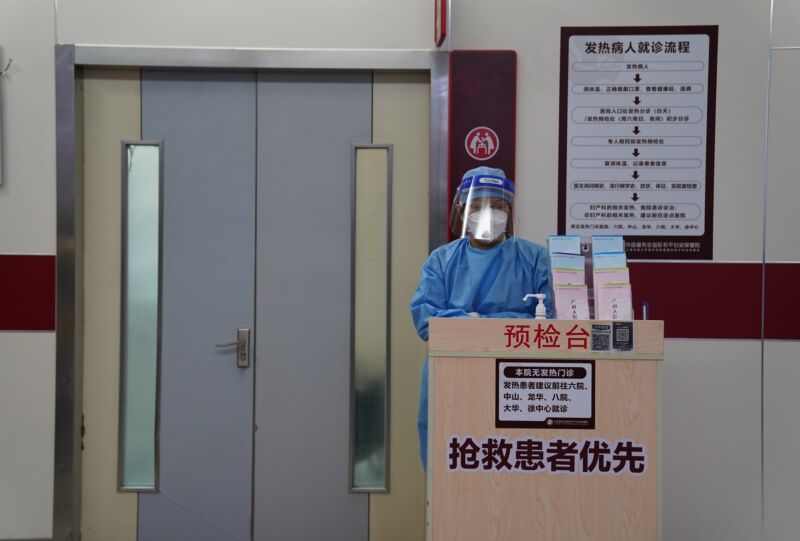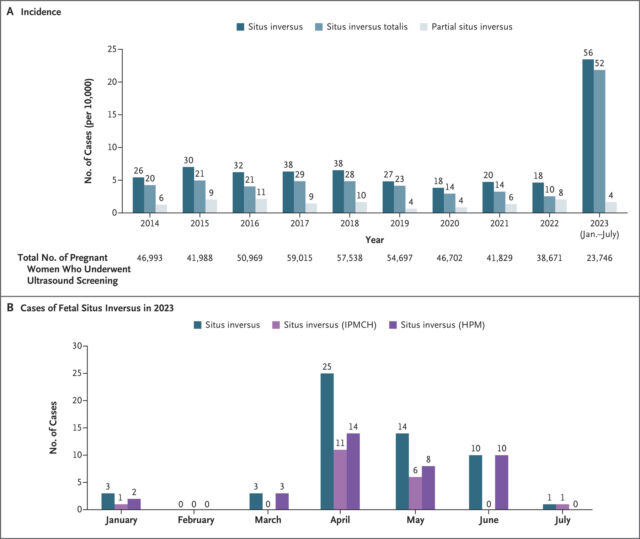
Doctors in China report a baffling surge in fetuses with situs inversus, a rare congenital condition where organs in the chest and abdomen are arranged in the opposite positions.
In the first seven months of 2023, the rate of fetuses diagnosed with the condition quadrupled compared to historical rates, according to a brief report in the New England Journal of Medicine.
For the report, doctors combined clinical records from two major obstetric centers in Shanghai and Changsha from January 2014 to July 2023. They found that from 2014 to 2022, approximately five to six out of every 10,000 pregnant individuals undergoing ultrasounds had situs inversus. However, in 2023, the rate surged to nearly 24 cases per 10,000 ultrasound screenings.
Upon analyzing the 2023 cases by month, the researchers discovered that the increase began in April and lasted until June, before returning to normal rates in July. In total, there were 56 cases of situs inversus from January to July 2023 among 23,746 ultrasound screenings on pregnant individuals.

The ultrasounds used to diagnose the condition were typically performed between 20 and 24 weeks of pregnancy. The authors noted that there were no changes in the diagnostic criteria that could explain the sudden increase.
“No Conclusions”
Without concrete evidence, the doctors speculate that the spike could be connected to the surge in COVID-19 cases that began in late 2022 when China lifted its zero-COVID policy. The subsequent wave of COVID-19 infected around 82 percent of China’s population, which is over 1.4 billion people. COVID-19 cases peaked at the end of December and continued into early February.
Approximately four months after the peak in COVID-19 cases, the surge in situs inversus started. The doctors suggest that the virus may have directly infected fetuses in utero or indirectly through maternal inflammatory responses.
However, this is all speculative. The report does not include data on whether pregnant individuals with fetuses diagnosed with situs inversus had COVID-19 during their pregnancies and how their infection rates compared to pregnancies without the condition. It also does not consider genetic and environmental factors known to be associated with situs inversus. Additionally, while cases of situs inversus quadrupled, it remained a rare condition overall, and no similar surges were reported during other waves of SARS-CoV-2 infections, including the initial pandemic in late 2019.
Therefore, the authors acknowledge that no conclusions can be drawn from the current report regarding the cause of this unusual spike. Nonetheless, they call for further research to investigate the underlying factors and the potential role of SARS-CoV-2. The good news is that most individuals with situs inversus have normal lifespans.

